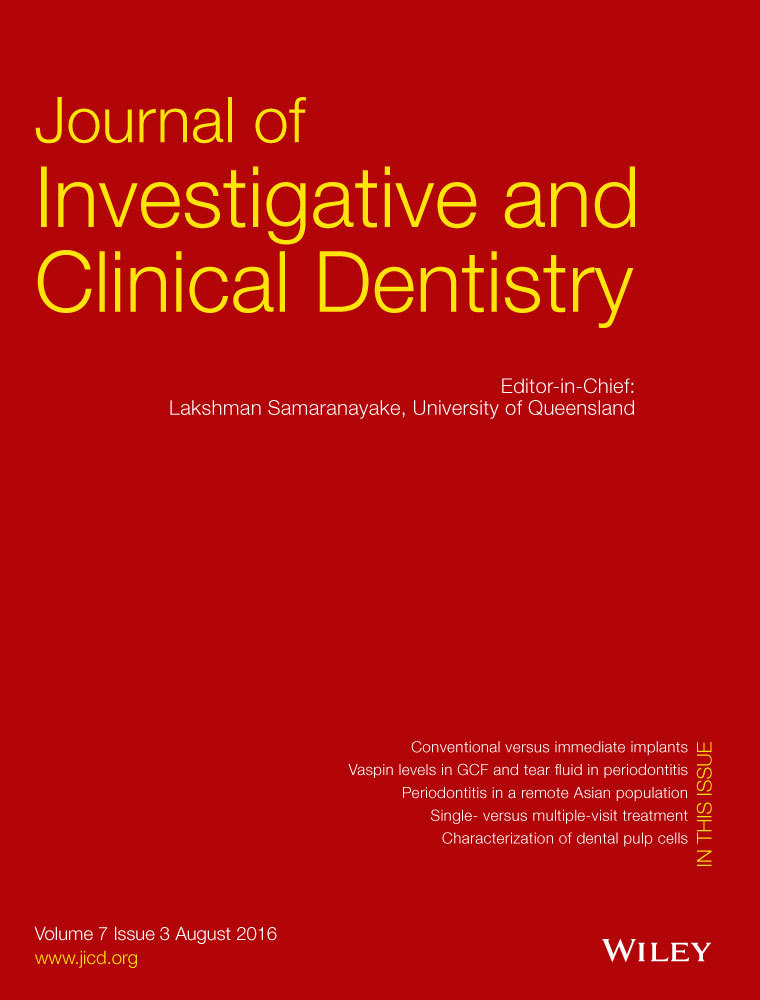Dimensional accuracy of different techniques used for complete-arch multi-implant impressions
Abstract
Objective
The aim of this study was to compare the linear horizontal dimensional accuracy of the stone casts obtained from four different direct transfer implant impression techniques compared with an acrylic master model.
Methods
An acrylic resin master model with four implants was fabricated. Four impression techniques were used with squared transfer impression copings. These were nonsplinted transfer copings, splinted transfer copings, airborne particle-abraded transfer copings coated with impression adhesive, and transfer copings with unilateral acrylic extension. Dimensional accuracy of the resultant casts was assessed with a traveling microscope by recording the linear horizontal distances between the most anterior implants and between the most posterior implants. Paired t-test and one-way anova followed by Tukey's post hoc test were used for the statistical analysis.
Results
The results showed a significantly greater anterior and posterior horizontal distance in the direct nonsplinted transfer copings technique compared with the master model (P < 0.05). When the horizontal variations were compared between the four impression techniques, the direct nonsplinted transfer copings technique had significantly the greatest anterior and posterior horizontal distance in comparison with the other impression techniques (P < 0.05).
Conclusion
Casts obtained from the direct nonsplinted transfer impression technique were significantly less accurate than those obtained from the other impression techniques used in this study.




